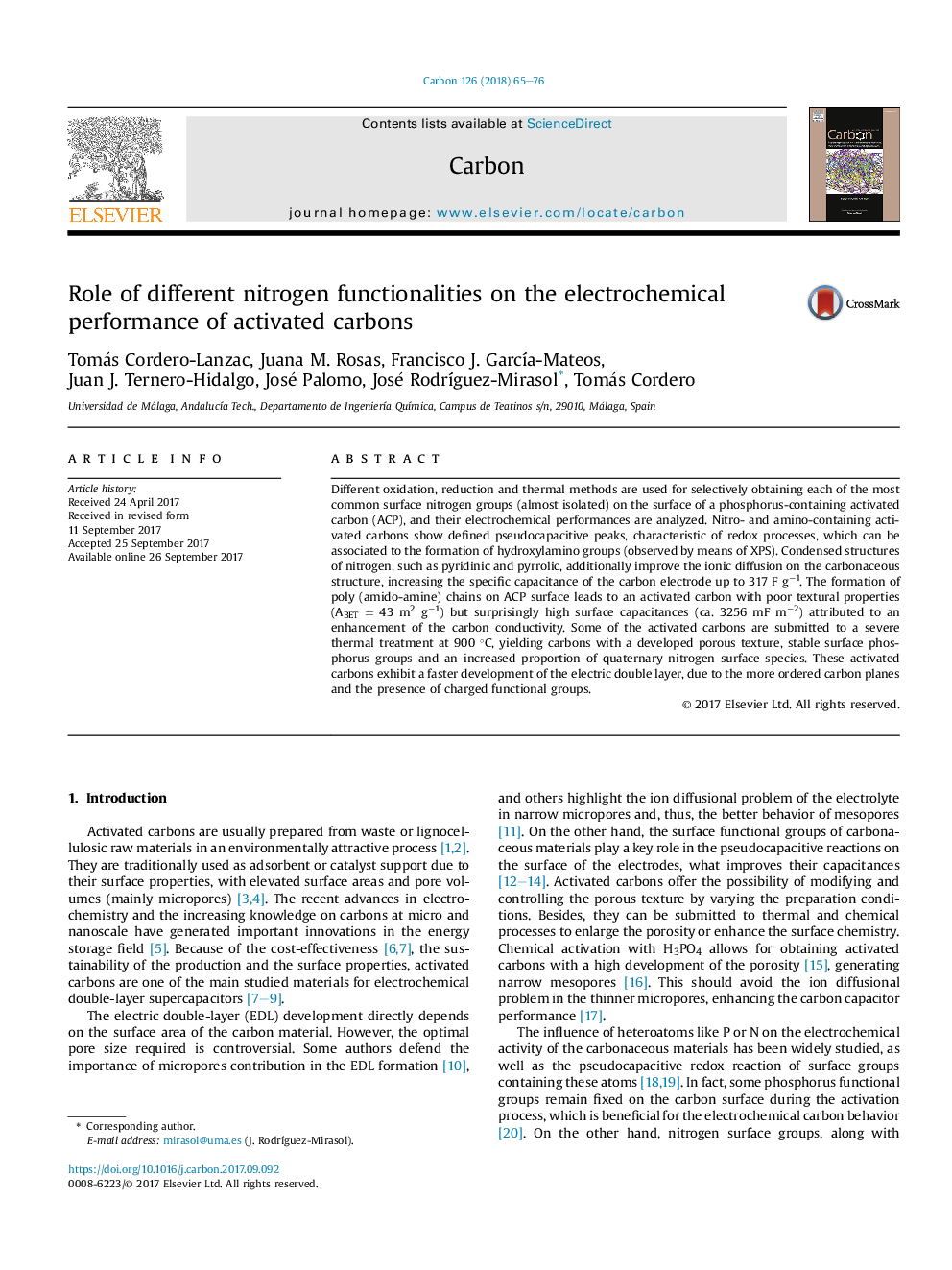| Article ID | Journal | Published Year | Pages | File Type |
|---|---|---|---|---|
| 5431486 | Carbon | 2018 | 12 Pages |
Different oxidation, reduction and thermal methods are used for selectively obtaining each of the most common surface nitrogen groups (almost isolated) on the surface of a phosphorus-containing activated carbon (ACP), and their electrochemical performances are analyzed. Nitro- and amino-containing activated carbons show defined pseudocapacitive peaks, characteristic of redox processes, which can be associated to the formation of hydroxylamino groups (observed by means of XPS). Condensed structures of nitrogen, such as pyridinic and pyrrolic, additionally improve the ionic diffusion on the carbonaceous structure, increasing the specific capacitance of the carbon electrode up to 317 F gâ1. The formation of poly (amido-amine) chains on ACP surface leads to an activated carbon with poor textural properties (ABET = 43 m2 gâ1) but surprisingly high surface capacitances (ca. 3256 mF mâ2) attributed to an enhancement of the carbon conductivity. Some of the activated carbons are submitted to a severe thermal treatment at 900 °C, yielding carbons with a developed porous texture, stable surface phosphorus groups and an increased proportion of quaternary nitrogen surface species. These activated carbons exhibit a faster development of the electric double layer, due to the more ordered carbon planes and the presence of charged functional groups.
Graphical abstractDownload high-res image (136KB)Download full-size image
